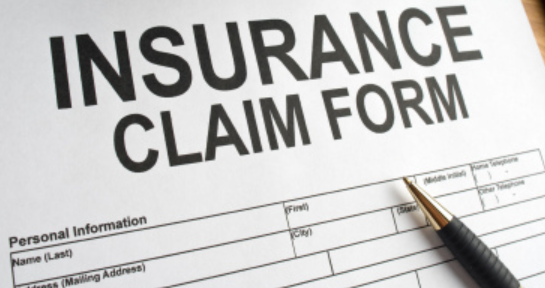Homeowner Insurance
Your Roof and Storm Damage
Roof issues caused by weather events are usually covered items on home insurance policies. With only a deductible to pay, that major roof repair or replacement can be much more manageable for most budgets.
How does the insurance claims process work?
- A claim is filed with your insurance company to notify them of damage. (We can provide additional storm information and help you determine if filing a claim is the right plan of action for you.)
- Your insurance company sends an adjuster out to inspect the damage. It is best to have us present at this meeting to insure all damage is properly documented for your benefit and to expedite repairs.
- If approved:
- Your insurance company will issue you your first payment check along with your claim summary paperwork. This first check is for the “ACV” (Actual cost value) of your roof as it currently is. The insurance company holds back the some of your payment to ensure repairs are completed. (Need help understanding how to read your insurance claim summary? Just ask us!)
- We perform the covered repairs and submit our notice of completion to your insurance company. If additional items of concern are discovered, we work with your insurance company to get this added to your claim summary paperwork, this is called a supplement. (Some examples are: a second layer of shingles discovered while doing the roof (added labor and disposal expenses!), local requirements to bring you to code, or line items that were mistakenly left off by your adjuster when finalizing the claim summary.)
- Your insurance company will release your second check, known as the “depreciation” which is the final balance for the work completed. This check is the added value of your new roof that has been restored to new. That’s it!
Why is it important to file my claim now?
Your insurance company limits the time you have to report damage after a storm and ties claims to specific dates. Not resolving repairs quickly can lead to deterioration and additional damage. The insurance company is concerned about their obligation for act of god claims, not damage that occurs because of owner negligence to handle repairs in a timely manner. Once a claim is issued, a roof that is not repaired is NOT covered for future claims until it is repaired. This is why the insurance company holds back the second (depreciation) check until work is complete.
……………………….
THE MATH!
ACV + DEDUCTIBLE + DEPRECIATION = RCV
ACV – Actual Cost Value (of your roof based on current age/condition)
Deductible – Amount you owe based on your insurance policy, this is paid to the contractor and will be deducted from any value determined by your insurance company. Example: If your deductible is $1,000, and the insurance company determines your roof value at $8,000 they will only pay a total of $7,000. Deductibles are paid by you to the company completing your work.
Depreciation – This is the balance check. It is only paid by your insurance company when work has been completed. They WANT to pay that check because it means your roof has been restored to a state to protect the rest of your home/contents again. This check must be requested, and will not arrive automatically.
RCV – Replacement Cost Value – The value of your roof in its restored and replaced condition. It is the total cost to make the repairs.
Supplement – A supplement sometimes happens if additional problems are discovered while performing repairs. We communicate and document this with your insurance company. (An example would be a surprise second layer of shingles discovered at tearoff which requires extra labor OR perhaps something was discovered to have been left of a claim summary due to human error.) This typically arrives as a third check or is included with the second (depreciation) check.
Did you know?
We include 2 sheets of roof decking FREE of charge. In the rare event rot is discovered, we want to make this as simple as possible for you. Your insurance company typically won’t pay for this and we know that it is impossible to know if this exists prior to repairs.
Your insurance rates will NOT increase if you file a claim due to storm damage. This act of god damage is not personal negligence. Rates due to storm damage are affected by the area, not individual homes. For example, those living along the coast have higher rates because of hurricane likelihood, just like some areas are more likely to see hail or tornadoes. Rates only rise because of an area cumulatively filing claims to repair damages.
Has your claim been denied in the past? You have a right to request a re-inspection. Adjusters see many claims every day and can sometimes miss damage or just have a bad day.
We have experience with the claims process. We are organized and maintain the appropriate paperwork to keep this as simple as possible for you. This is all done as a courtesy to you. This also means we eliminate any headaches should mis-measurements or missing items be discovered on your insurance paperwork. This happens more than you’d think!
We utilize Xactimate software. This is the same software used by the insurance companies for fair market value. By price shopping for cheaper work, you only save the insurance company money and often end up with an inferior product/install. The insurance company will keep the balance difference (leftover depreciation) because it was not used. Unfortunately, they don’t consider your time and suffering as a reason to send you the balance instead. They are a business too, after all!
Questions? Want to schedule an inspection?
Call us at: (770)624-1009
Email: [email protected]

[/vc_row]
